ALGERIAN REPUBLICAN GUARD HISTORY
Introduction
Before starting the history of the creation and development of the Republican Guard Command, it is necessary to present a brief overview of the role of the Cavalry and Fanfare at the various historical stages in the history of the Algerian Army, which thus formed an inseparable combination that accompanied national celebrations and holidays as well as formal ceremonies for kings and heads of state.The Cavalry and drums in the history of the Algerian Army:
The cavalry played a key role in the history of the Algerian Army, particularly during wars and battles against foreign occupiers, so historians mention that the troops at the time of the Numidian Kingdoms were based on cavalry and archery. This was the case during the different historical periods of Algeria, up to the resistance and popular revolutions against French colonialism where horses represented the transporting and striking force within the Emir Abdelkader's army, the latter was composed of infantry soldiers, gunners and cavalrymen.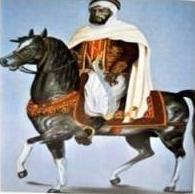 |
One of the Knights of the Popular Resistance |
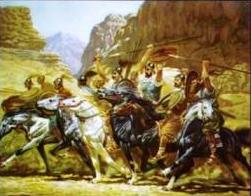 |
Numidian Knights |
The organization of the horsemen's arm in the Emir Abdelkader's army was an elementary, simple organization based on the formation of an autonomous basic combat unit, composed of fifty horsemen (company), this combat unit was under the command of an officer called "SEYYAF" and the high rank of this weapon was: "Commander of Cavalry", the latter was assisted by the cavalry instructor. This organization was generalized to all the administrative districts of the Emir where each had a unit of fifty riders. Moreover, the Emir did not neglect the role of military music in the formation of the army, the drum and military music were then considered as tools of war used for communication and awareness of soldiers during combat.
At the central level, the Emir founded the basis of this service, and deployed its elements within the cantonments as required. He also taught the soldiers the meaning and signification of drum rolls and how to submit to them.
During the liberation war, horses were the primary means of transport for officials, particularly during their inspection visits to NLA units, as it was the most appropriate means of long-distance travel through mountains and winding regions.
The history of horses is closely linked to the nation's cultural and folk heritage. Indeed, the cavalry was a sign of pride and glory, which led to the creation of "the horse riding clubs". Accompanied by drums and music, the horses were used in official ceremonies, national holidays and protocol. And they have continued to gain importance in these areas ever since.
At the central level, the Emir founded the basis of this service, and deployed its elements within the cantonments as required. He also taught the soldiers the meaning and signification of drum rolls and how to submit to them.
During the liberation war, horses were the primary means of transport for officials, particularly during their inspection visits to NLA units, as it was the most appropriate means of long-distance travel through mountains and winding regions.
The history of horses is closely linked to the nation's cultural and folk heritage. Indeed, the cavalry was a sign of pride and glory, which led to the creation of "the horse riding clubs". Accompanied by drums and music, the horses were used in official ceremonies, national holidays and protocol. And they have continued to gain importance in these areas ever since.
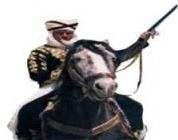 |
A photo of equestrian heritage |
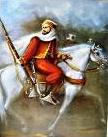 |
One of Emir Abdelkader's Horsemen |
The creation of the Republican Guard and its development:
The creation of the first nucleus of the Republican Guard dates back to the first days of independence, which coincided with the official declaration of the transition from the National Liberation Army to the National People's Army.The Republican Guard has undergone structural and organizational development, in accordance with the missions entrusted to it, since its creation to the present day. Its historical roots go back to the glorious Revolution of Liberation, in particular, the first nucleus of music and then the cavalry, just after independence, which is inseparable from music. Then, other units of the Republican Guard were created and did not stop experiencing a remarkable development and modernization, to finally reach this prestigious level of performance.
The Republican Guard's missions are mainly focused on:
- Music formations;
- Cavalry formations;
- The units and their different specialties.
 |
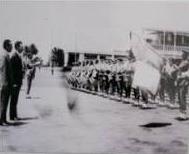 |



